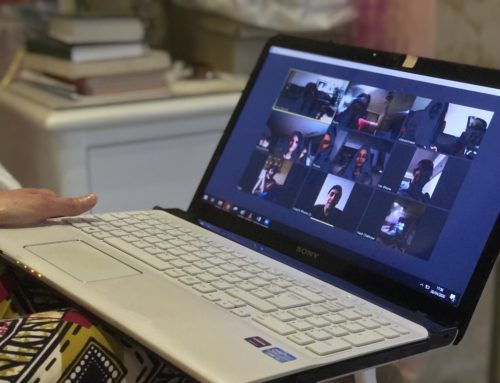
Your nonprofit faces long odds whenever it sends a press release to a reporter or editor.
Even under the best of circumstances, your release is competing with dozens of other releases and story ideas to earn that journalist’s attention. And even if that journalist opens and reads your announcement, you still must sell her on the idea that yours is a story worth covering.
With that in mind, I’m kicking off a series of posts that will offer advice on how to write compelling releases. In future posts, I will explore a number of tactics to help your releases get more attention and improve your chances of getting coverage. We’ll investigate how topics like how to write compelling headlines and leads, how to add more color and bite to your quotes, and what to include in your cover notes.
But I think it’s best to begin with an examination of the ‘nut graph‘, since an effective nut graph not only helps sell your story to the media, but it is the key that unlocks many of the other elements of your release.
If you were trained as a journalist or have ever worked in a newsroom, you’re probably already familiar with the term nut graph, which refers to the paragraph in a news story that tells readers why they are reading the story.
Nut graphs often appear early in the story — typically in the second or third paragraph — and set the context for what follows. They can be full paragraphs, short sentences, or something in between. But no matter the length, a good nut graph offers a clear roadmap to what makes the story important.
Show me a good reporter — and I’ll show you someone who goes out of her way to include a strong nut graph in her story.
In my days as a reporter, I often built my stories around my nut graph. Once I wrote it, the rest of the piece often came together quickly. With my nut graph locked down, I could easily figure out which information was most important and be sure I was providing readers with the context needed to understand why they were reading my piece.
As a communications professional, it’s important to take the same step with your own writing — particularly with your press releases.
If you can quickly and concisely identify why the story you are pitching is important, you stand a better chance of convincing the reporter that it is a story worth telling.
To earn attention, it’s typically not enough to simply write a release announcing a new program at your organization. That release should explain — very clearly and prominently — why this new program is important and what it hopes to accomplish.
This is your opportunity to give the reporter a clear news hook for your piece — and for you to help place the story in a context that advances your organization’s goals.
But how do you find that context?
Here are five questions that you can ask before you write your release that will help you determine how you should frame your nut graph:
What is different about this release?
The fact that you are announcing a new executive director for your organization isn’t different. Every organization hires a new director from time to time.
But the person you are hiring usually brings something different to the table. Perhaps she is the first woman to ever lead an arts organization in your city, or the first graduate of your program to lead it.
If you can identify something different that might help your announcement stand out, your nut graph becomes fairly easy. Here’s an example:
“Jones, who is the organization’s 17th director, becomes the first woman to lead a major arts organization in Gotham City.”
Is this part of a larger trend?
Let’s say you are having a hard time identifying what’s different with your announcement. In that case, maybe you can focus on how it connects to a larger trend.
Reporters are always looking for trends — but because they don’t work for nonprofits, they might not recognize the fact that you are announcing a new program, partnership, or major gift that is reflective of a larger trend in our field. By spotting and calling out a trend in your nut graph, you’re helping the reporter find a hook for her story and showing how your organization is part of a larger movement.
Example: “The new program is part of a growing trend among nonprofits: partnering with local community foundations to track and measure a city’s progress toward improving adult literacy rates. Similar programs in cities like Detroit and Pittsburgh are already showing great promise in addressing this important issue.”
What is the impact?
Impact is a buzzword in the nonprofit world — and for good reason. If you can identify how your announcement will have an impact on the community it serves or a problem you’re trying to solve, you have a ready-made news hook (and a nut graph that almost writes itself).
Example: “With this grant from Vandelay Industries, the Kramer Center will be able to provide housing assistance to 300 families that otherwise would not be able to afford rents in the neighborhood.”
Is it timely?
Perhaps your release helps address an issue that is particularly timely or connects to a larger event in the news. Identifying a connection to something current can help give you the hook you need for your nut graph.
Example: “At a time when many local workers have lost their jobs due to the recent recession, this new program offers career training and placement services that are otherwise difficult to afford.”
Can someone learn from it?
For some outlets, “news you can use” is in high demand. Rather than simple reporting on an announcement, they are looking to offer content that helps readers or viewers learn something that they can apply to their own lives.
Your nonprofit, for example, might have developed a way to create really cool videos on a small budget or how to partner with organizations to purchase supplies at a lower cost than you would on your own. Pitching these developments as stories that can help teach other nonprofit leaders or businesses how to be more effective could help you land stories — and do some good in the process.
Example: “The new partnership is the result of months of deliberate planning and negotiations and provides a roadmap for other organizations that are looking to manage their costs responsibly.”
Peter Panepento is principal at Panepento Strategies, a full-service content, digital, and social strategy firm for nonprofits and socially-minded companies. He was formerly an assistant managing editor at the The Chronicle of Philanthropy, where he led its transition into digital journalism and social media — a transition that included the creation of some of the nonprofit world’s richest online communities, the launch of a highly profitable webinar series, and the creation of new digital products such as the How America Gives giving database. He also serves as Nonprofit Marketing Guide’s adviser on public relations.
Photo credit: Kate Ter Haar






